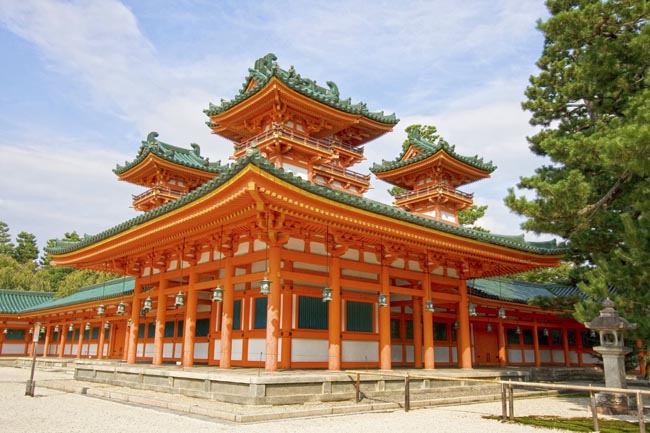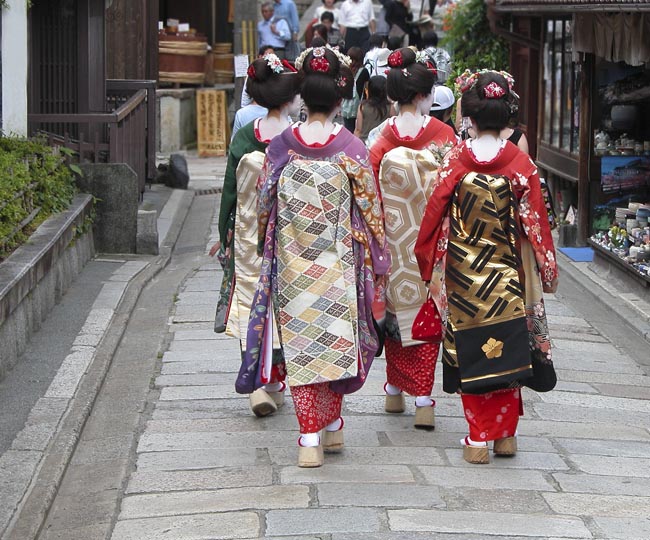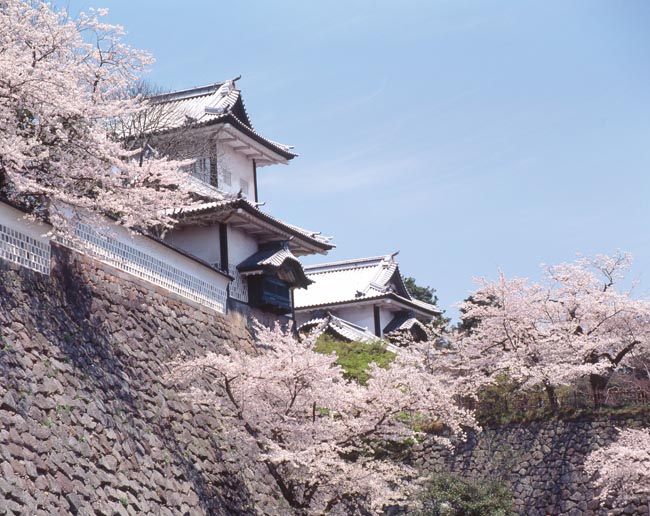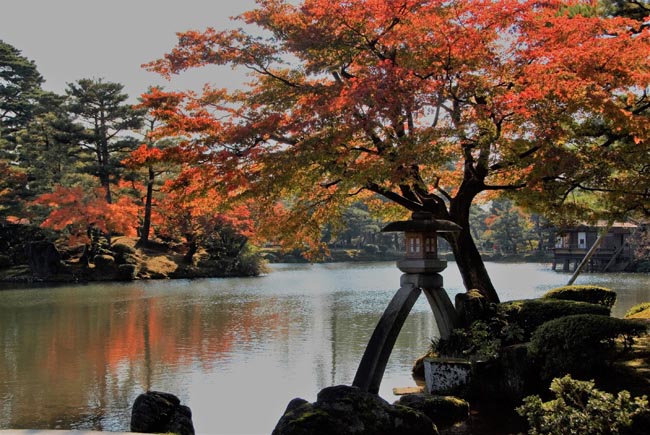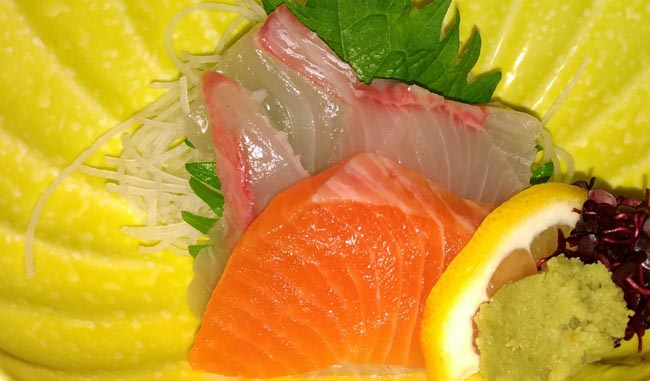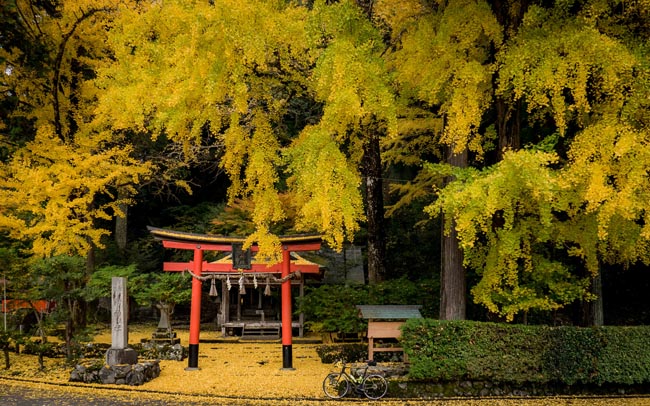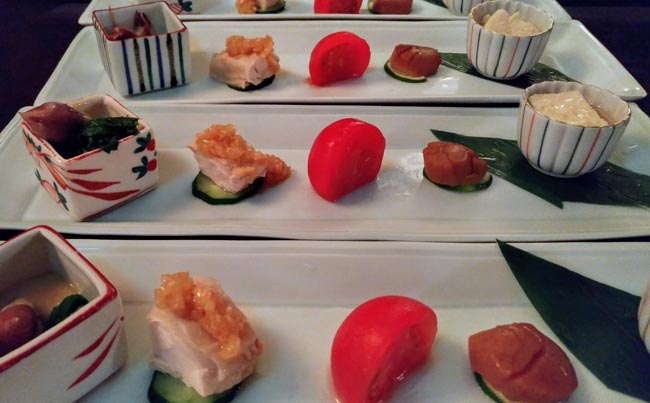Our Experiential Japan tour is designed and intended for those travellers who want to directly experience Japanese culture and society, ancient and modern, and to venture beyond the main tourist route.
We've been offering unique itineraries in Japan for almost two decades, and this exciting new trip responds to many past travellers who have expressed a desire to return and to more fully engage with Japanese society and traditions beyond the experiences and sites featured by our more mainstream Japan programs.
This trip also appeals to the foodie, and to those who see food and eating as a very instructive window into the soul of a culture.
To this end, we invite you to open your minds, pack your sense of adventure, and lets us help you delve deep into the magic that is Japan, at once strongly traditional and unabashedly modern.
Prices below are per person, twin-sharing costs in US Dollars (USD). Pricing does not include airfare to/from the tour and any applicable taxes. For single supplement rates and taxes (if any), please refer to below Prices & Dates table. For general information on flights to/from the tour, click here.
Select a date below to reserve your spot:
Our tour end point (Kyoto) is best-served by Kansai Airport (Osaka) from which most international flights depart. Flights that connect in Japan before going international will likely depart Itami, the domestic airport serving Osaka. PLEASE NOTE that, due to logistical challenges and high costs in Japan, we offer customization services only for groups of minimum 10 participants plus a mandatory tour leader.
Optional Single Supplement: $770 USD (number of singles limited).
Download Itinerary
Day 1 Arrival in Tokyo
Today we arrive in Tokyo and transfer to our hotel.
Tokyo is Japan's capital and the country's largest city. Prior to 1868, Tokyo was known as Edo. A small castle town in the 16th century, Edo became Japan's political centre in 1603 when Tokugawa Ieyasu established his feudal government there. A few decades later, Edo had grown into one of the world's most populous cities. Today it's a fascinating, mind-boggling amalgam of the traditional and the hyper-modern, and the perfect place to begin our immersion into Japanese culture and society.
PLEASE NOTE: Due to Japan Rail procedures related to your passes used for the tour, it is important that you arrive no later than "Day 1", the published start date of your tour.
Overnight in Tokyo.
Included Meal(s): Dinner
Day 2 Tokyo: City Touring
Tokyo is a dazzling modern metropolis rich in history and tradition. While the pace and the glitz of the city can be overwhelming, we will do our best to also showcase the tranquil, traditional side of the world's most populous city.
We have a private bus at our disposal today, though we may, during our time in the city, also make use of its legendarily efficient public transit system, an excellent way to observe the locals going about their daily lives in one of the world’s most vibrant cities.
We’ll kick off our morning with a visit to one of Tokyo’s venerable department stores, the earliest of which were founded during the early 1900s. Their predecessors were kimono stores, which supplied various types of luxurious goods during the Edo and Meiji periods. Japanese department stores are famous for their unparalleled customer service; we’ll aim to be there just before it opens when we will see its employees lined up neatly, waiting to welcome customers. The moment the second hand of the clock hits the opening time, the doors punctually open and customers can make a grand entrance being flanked by bowing and greeting staff.
We’ll take some time to stroll through the food halls, where you will see the amazing variety of beautifully-presented foods being sold at unbelievably high prices. Seeing where and how the Japanese shop, what they buy, for whom and for what occasion, offers instructive glimpses into a highly sophisticated social strata where conventions of human interaction and presentation are minutely-defined. Whether it be for a wedding, business meeting or returning from a trip, the culture of gift giving in Japan is one of the most prevalent in the world. However, unlike in some other cultures, in Japan the emphasis is more on the ritual of gift giving than the gift itself. This dates back to the Edo period when a lucky few would go on pilgrimages and bring back souvenirs for the villagers who weren’t able to go. You’ll have time here to pick up supplies for a picnic lunch at our next stop (a “bento box” is an excellent and convenient option).
We then move on to the East Gardens of the Imperial Palace, part of the inner palace area. The Imperial Palace, or Kokyo, built on the site of the Edo-jo Castle, is an impregnable fortress that housed the Tokugawa Shogunate for 265 years until Emperor Meiji moved the court here in 1860's. Surrounded by moats, the original outer walls extended for over 16 km (10 miles) and were thick enough for a squad of samurai to walk six abreast on top. Even in its original state, it deceptively looked more like an administrative villa than a fortress. The buildings survived until they were all but obliterated by the fire bombings of WWII. You’ll have time to explore a bit, see the iconic bridge, and to enjoy your picnic lunch in a relatively peaceful setting.
Our next stop is Meiji Shrine. Entry into the shrine grounds (a ten minute walk) is marked by a massive torii gate, after which the sights and sounds of the busy city are replaced by a tranquil forest. The approximately 100,000 trees that make up Meiji Jingu's forest were planted during the shrine's construction and were donated from regions across the entire country. At the middle of the forest, Meiji Jingu's buildings also have an air of tranquility distinct from the surrounding city.
While in the vicinity of the shrine, time- and weather-permitting, we may be able to take a stroll down nearby Takeshita Street, possibly the busiest and definitely the most colourful pedestrianized shopping street in Tokyo.
Our last stop is Ueno Park and the National Museum which, among other things, features the finest collection of Japanese art in the country. After our guided tour of the museum we will return to our hotel before our evening meal at a local restaurant.
Overnight in Tokyo.
Included Meal(s): Breakfast and Dinner
Day 3 Tokyo: Sushi Making Class
This morning we take a fascinating dive into Japanese seafood cuisine during a 3-hour combination walking tour of a local fishmarket and cooking class, where we can learn to prepare traditional style 'washoku' food items like sushi and a Japanese omelette.
We meet up with our guide in front of Tsukiji Honganji Temple, located just outside the market. Then we step inside this temple to all things seafood for an in-depth shopping session including some time for photography and exploration. As you wander the aisles of this colourful and chaotic market, you’ll observe everything from sea urchins to octopus arranged for sale.
We'll then proceed with our guide to the gourmet cooking studio of one of Asia's largest culinary schools, boasting more than 150 studios throughout the region. Following the instruction of an experienced cooking teacher, we'll learn to prepare two 'washoku' recipes, a style of Japanese cuisine emphasizing traditional and homemade techniques. This typically includes a sushi roll along with a Japanese style omelette called Tamagoyaki, plus side dishes. This will be an excellent and fun introduction to Japanese cuisine, definitely a highlight of any trip to Japan.
We finish our session by digging into our tasty creations for lunch accompanied by drinks. We'll leave with full stomachs and a new-found appreciation for the wondrous world of Japanese cuisine and its top-notch ingredients.
Because of our late/filling lunch and full day tomorrow, and because you may be planning an evening activity before we leave Tokyo, we will leave dinner on your own account tonight. Your Tour Leader can help you plan.
Tomorrow our large luggage is transported to Nagano for us -- please pack an OVERNIGHT BAG for TWO NIGHTS. Your Tour Leader will advise in advance re recommended items to have with you for the next two days.
Overnight in Tokyo.
Included Meal(s): Breakfast and Lunch
Day 4 Tokyo - Bullet Train to Yamagata - Mt Haguro & Sanjin Gosai-den
Today we travel to Yamagata on Japan's exciting and super-efficient Shinkansen "bullet train" (about 2.5 hours).* Yamagata is a large prefecture along the Sea of Japan coast in the southern Tohoku Region. The area is known for its agricultural products (especially cherries - in season), hot springs, rural flair, and natural beauty. On arrival we travel by private coach to Mt Haguro.
The first few days of our trip are weighted toward matters spiritual, with temple and shrine visits and an immersion in Japan's venerable culture and traditions. With this in mind, we'll visit Sanjin Gosai-den, the largest wooden building with a thatched roof in Japan. The present structure is from 1818 but its history reaches much further back in time. Looking at the impressive over two meter thick thatched roof, you don’t want to image the amount of labour that goes into repairing it.
We continue to the vicinity of Mt. Haguro. People have been drawn to this spot because of its solemn atmosphere and the 1,400 year history since the founding of the shrine. Mount Haguro is considered sacred by followers of Japan's Shinto religion and of Shugendo, an ancient Japanese tradition of mountain worship whose practitioners are commonly known as Yamabushi ("those who lie in the mountains"). Taking their faith very seriously, they come every year on a pilgrimage to worship their deities.
On top of Mount Haguro there are a number of temples and shrines, although this is said to be a shrine complex. It just shows that Buddhism and Shinto were entwined before the two religions were forcefully separated in Japan's Meiji Restoration, the events restored imperial rule to Japan in 1868 and that heralded the begin of a new era in Japan.
There is a trail leading to the top of the mountain; however, it is common for visitors to be limited to walking only one way (down) in order to relieve congestion, which means that we will likely travel to the top by road and then offer the option to either walk or ride back down. Your Tour Leader will provide details prior to arrival so you can consider your options; however, we can advise that the trail is well-surfaced with 2,446 shallow steps and should take just over an hour to descend.
We will see the centuries-old wooden pagoda and a nearby cedar tree that is said to be 1,400 years old -- there were once two of them and they were thought of as a "couple" but one was sadly destroyed by lighting). The remaining ancient cedar stands proud amongst its younger cousins that are "only" a few hundred years old. Walking in a forest of huge ancient cedars definitely makes one feel humble and small.
Apropos of the nature of our surroundings, our night's 'Shukubo' temple accommodation reflects the solemnity of this special place. Originally the lodgings for the Buddhist monks, the story goes that Shukubo became available for ordinary pilgrims around 1,200 years ago during the Heian Period. From that time, there seemed to be Shukubo that was managed by persons other than Buddhist monks. About 400 years ago, when it became the Edo period, Shukubo became even more popular. Guests are encouraged to take part in temple activities and to learn about traditional temple life. Accommodations are spartan, but comfortable and atmospheric -- truly an unforgetable and quitessentially Japanese experience.
* This morning our large luggage will be sent ahead to Nagano for us (we will have the bus for the day after we arrive in Yamagata, so your day bags can be left on board during our day's activities prior to arriving at our hotel later today).
Overnight at Mt Haguro.
Included Meal(s): Breakfast and Dinner
Day 5 Mt Haguro & Yamadera Temple - Matsushima
This morning, after breakfast and morning prayers, we visit Yamadera Temple, famous for the haiku poem by Basho Matsuo. The temple grounds extend high up a steep mountainside from where there are great views down onto the valley. The temple was founded over a thousand years ago in 860 as a temple of the Tendai sect under the official name Risshakuji. Its popular name, Yamadera, literally means "mountain temple" in Japanese.
We then travel by coach to Matsushima Bay. For hundreds of years, Matsushima Bay has been celebrated as one of Japan's three most scenic views alongside Miyajima and Amanohashidate. The bay is dotted by over 200 small islands covered by pine trees. On arrival we check-in to our traditional deluxe-class Ryokan style accommodation with time relax and enjoy our splendid surroundings and the amenities.
Ryokan are Japanese style inns found throughout the country, especially in hot spring resorts. More than just a place to sleep, ryokan are an opportunity to experience the traditional Japanese lifestyle and hospitality, incorporating elements such as tatami floors, futon beds, Japanese style baths and local cuisine. This evening you can enjoy the onsen (hot spring baths) and a traditional Japanese dinner.
Overnight at Matsushima.
Included Meal(s): Breakfast and Dinner
Day 6 Matsushima Bay - Sendai - Train to Nagano
This morning we'll have a scenic cruise on Matsushima Bay. Afterward we'll visit Zuiganji Temple, one of the Tohoku Region's most famous and prominent Zen temples, well-known for its beautifully-gilded and painted sliding doors (fusuma). Zuiganji is a reflection of the natural beauty of Matsushima and, upon entering the temple grounds, the approach to the main hall proceeds along a long, straight path flanked on both sides by cedar trees. An alternate path detours off to the right of the entrance and by a number of caves that were used in the past for meditation, and today contain statues.
We continue to Sendai from where we depart by Shinkansen for Nagano (3.5 hours). In 1998, the city hosted the Winter Olympic Games, and some former Olympic facilities can still be viewed around town. Historically, Nagano has been known for its ninja training schools.
* We will be reunited with our large luggage today upon arrival.
Overnight in Nagano.
Included Meal(s): Breakfast and Dinner
Day 7 Nagano: Monkey Park & Obuse
Today we'll travel out of town we'll visit Jigokudani Snow Monkey Park, which offers visitors the unique experience of seeing wild Japanese macaques bathing in a natural hot spring. The park is located in the monkeys' natural habitat in the forests of the Jigokudani Valley. While it is never guaranteed that monkeys will be seen and seen bathing (they usually only bathe in cold weather), the forest walk to get to them (+/- 30 min each way) is pleasant, especially in the fall when the leaves are in colour.
We'll also visit Obuse, a small town with a pretty town center. Hokusai, a renowned Edo Period (1603-1867) woodblock painter, who is best known for his ukiyo-e woodblock print, "The Great Wave off Kanagawa," spent the later years of his life in Obuse with his patron, a wealthy local merchant and art enthusiast. Several of the town's highlights are related to the artist and his patron, including the Hokusai Museum which we'll visit.
Obuse is also well known for its seasonal produce, especially locally-grown chestnuts. Be sure to sample some of the chestnut confectionary treats available at shops throughout town.
Overnight in Nagano.
Included Meal(s): Breakfast and Dinner
Day 8 Nagano: Matsumoto, Wasabi Farm & Zenkoji Temple
Today we have a full-day private coach day trip to Matsumoto.
In Matsumoto we'll visit Matsumoto Castle,* the oldest and one of the most complete and beautiful among Japan's original castles (not a post-war reconstruction). It is a "hirajiro" -- a castle built on plains rather than on a hill or mountain. Matsumoto Castle is unique for having both a secondary donjon and a turret adjoined to its main keep. The castle structures, in combination with their characteristic black wainscoting, give off an air of grandeur and poise.
With a shift of gears, our next stop is the Daio Wasabi Farm, one of Japan's largest wasabi farms with multiple large fields and a meticulously maintained network of small streams that constantly provides each wasabi plant with clear, flowing water from the Northern Alps. Only under such pristine conditions is wasabi cultivation possible. An idyllic scene of old-fashioned, wooden water wheels alongside the river can also be enjoyed from the walking trails. The water wheels were constructed here for the filming of Kurosawa Akira's "Dreams" in 1989 and have been left standing.
A shop sells a dizzying array of wasabi products to take home with you -- be sure not to miss the video presentation about the farm (if you can't find it ask the staff as it doesn't really jump out at you!).
Back in the city, we also visit Zenkoji Temple, founded in 642 when Yoshimitsu Honda enshrined a Buddhist image at the present site. Nagano City evolved as a temple town around Zenkoji, one of Japan's most popular temples.
* We will have time to visit the castle's interior, though please be aware that to climb up into the castle involves removing your shoes and staircases that are very steep.
Overnight in Nagano.
Included Meal(s): Breakfast and Dinner
Day 9 Nagano - Train to Kanazawa: City Touring
Today we travel by Shinkansen to Kanazawa (70 minutes).* On arrival we have a walking tour of Kanazawa City.
During the Edo Period, Kanazawa served as the seat of the Maeda Clan, the second most powerful feudal clan after the Tokugawa in terms of rice production and feif size. Accordingly, Kanazawa grew to become a town of great cultural achievements, rivaling Kyoto and Edo (Tokyo). During World War II, Kanazawa was Japan's second largest city (after Kyoto) to escape destruction by air raids. Consequently, parts of the old castle town, such as the Nagamachi samurai district and Chaya entertainment districts, have survived in good condition.
We'll have a walking tour of the Samurai District, a beautifully-preserved historic area that was once the residential district for the city’s samurai. It is a lovely area of canals and stone-flagged winding lanes that run between tile-topped earthern walls. Some of the former samurai houses and their gardens are also open for public viewing. We will visit the Nomura Residence, known for having one of the finest traditional residential gardens in the country.
We also visit Kenroku-en garden, Kanazawa's unchallenged main attraction and one of Japan's "three best landscape gardens," and by many considered the most beautiful of them all. Opened to the public in 1871, Kenroku-en features a variety of trees, shrubs, moss, and water features, which provide the garden with a different look for each season.
Finally we'll explore the Higashi-Chaya District. A chaya (teahouse) is an exclusive type of restaurant where guests are entertained by geisha who perform song and dance. During the Edo Period, chaya were found in designated entertainment districts, usually just outside the city limits. Of the three districts, the Higashi-Chaya is the largest and by far the most interesting. Two chaya, the Shima Teahouse and Kaikaro Teahouse, are open to the public. Other buildings along the central street now house cafes and shops. One of the shops, Hakuza, sells gold leaf products, a specialty of Kanazawa, and displays a tea ceremony room which is completely covered in gold leaf.
* This morning our large luggage will be sent ahead to Kyoto for us (which is also a good thing due to the small size of hotel rooms in this city). Please pack a smaller bag for two nights -- we will be able to drop these bags at the hotel in Kanazawa before beginning our sightseeing.
Overnight in Kanazawa.
Included Meal(s): Breakfast and Dinner
Day 10 Kanazawa: Gokayama & Shirakawa Villages
Today we have full-day sightseeing in and around Kanazawa.
We will visit Shirakawa and Gokayama villages (both World Heritage Sites) where we will see the "Gassho" farmhouses. Gassho literally means that palms of hands are joined together in prayer. These are 3- or 4 story-wooden farmhouses with thick thatched roofs, some of which are almost 200 years old. These Gassho farmhouses are still occupied by families who still go about their daily lives in the village. We will visit a Gassho farmhouse, the observation deck, and the folk museum. We also enjoy a washi paper making experience nearby.
Time-permitting we'll stop at the D.T. Suzuki Museum, a small museum commemorating the life and works of Suzuki Daisetz Teitaro (1870-1966), a prominent Buddhist philosopher. D.T. Suzuki was a prolific writer who was instrumental in introducing Japanese Zen philosophy to the West.
Overnight in Kanazawa.
Included Meal(s): Breakfast and Dinner
Day 11 Kanazawa - Train to Kyoto
Today we board the Thunderbird Limited Express train to Kyoto (about 2 hours).*
Kyoto vibrates with creative energy. For 1,000 years, skilled craftsmen, wise masters, and the nation's most promising fine artists have been lured here. The deep impress of culture and the refinement is indelible; it's in the soul of the city. A long line of Japanese emperors was enthroned here, and the city retains this regal bearing through myriad festivals and commemorative customs preserved from feudal times. In diminutive home workshops along cobblestone alleyways no wider than a footpath, lacquerware, cloisonne, damascene, kimono fabrics, pottery, porcelain, fans, dolls, embroideries, and bamboo ware are still expertly turned out by hand. Kyoto attracts a sophisticated crowd to its vibrant Noh and Kabuki theatres, while the last geisha finishing schools are found in the lantern-lit side streets of the Pontocho and Gion sections of the city.
Thankfully, Kyoto's treasures were spared from bombing during WW II, when American scholars persuaded the military to leave this masterpiece of a city alone. Though Kyoto is now a thoroughly modern city, much of its spirit is intact, with over 200 Shinto shrines; 1,600 temples, 30 of which administer to the major sects of Buddhism throughout Japan; three Imperial palaces; nine major museums; and countless classic gardens.
Upon arrival we'll visit the Nishiki Food Market, a pleasant but busy atmosphere that is inviting to those who want to explore the variety of culinary delights for which Kyoto is famous. Most shops specialize in a particular type of food, and almost everything sold at the market is locally produced and procured.
We'll finish our day in the Gion District, a traditional entertainment district. Originally, the entertainment area developed here to service its many Gion Shrine pilgrims with food and drink. Later, as Kabuki drama became popular on the Gion's western edges, more sophisticated forms of entertainment were developed for the theater-goers, and so today Gion is known as Kyoto's most famous geisha district.
* OUR LUGGAGE will be waiting for us on arrival in Kyoto.
Overnight in Kyoto.
Included Meal(s): Breakfast and Dinner
Day 12 Kyoto: City Touring
Today we have a full-day Kyoto city tour by private coach.
We proceed to Kinkakuji, the Golden Pavilion, one of Japan's most famous architectural and historical icons. We also visit Ryoan-ji, the famous raked gravel Zen Garden, for which the Zen Buddhists are renowned. The essential dichotomy and harmony of the universe, which lies at the heart of this belief system, is symbolized in these tranquil gardens.
We then diverge from the well-beaten tourist path to visit Genkou-an Temple, the most well- known features of which are two windows in the main hall that look out onto a less orderly, but no less inspiring, garden of flowering trees and stone lanterns. One window is square, representing four human afflictions: life, old age, illness, and death. The other is round, representing Zen awakening. Turn away from these windows and walk over to the opposite wall -- just to the right of the center of the ceiling is a very clear footprint.
While in Kyoto we'll enjoy a tea ceremony experience. The Tea ceremony is a fundamental part of Kyoto's aesthetic culture, and a tea session is a good introduction to its form: enjoying a tea sweet, followed by a delicious, freshly-whisked cup of matcha in the company of friends.
Overnight in Kyoto.
Included Meal(s): Breakfast and Dinner
Day 13 Kyoto: City Touring
Today's half-day tour includes a visit to Fushimi Inari Shrine, famous for its thousands of vermilion torii gates, which straddle a network of trails behind its main buildings. The trails lead into the wooded forest of the sacred Mount Inari, which stands at 233 meters and belongs to the shrine grounds. Fushimi Inari is the most important of several thousands of shrines dedicated to Inari, the Shinto god of rice.
We then visit a sake brewery. You’ll be steeped in the history of Japan's most famous drink and learn how sake is made, and then enjoy a sake tasting while an expert guide describes the ingredients and process that created each characteristic flavour.
Afternoon free at leisure.
This evening we enjoy a farewell dinner with a beautiful Maiko dance performance.
Overnight in Kyoto.
Included Meal(s): Breakfast and Dinner
Day 14 Departure
Departure from Kyoto.
DEPARTURE from Kyoto, which is served by Osaka's Itami Airport (for domestic flights connecting elsewhere in Japan before heading overseas), and Kansai Airport for international flights departing Osaka.
ITTE IRASSHAI!!
Included Meal(s): Breakfast
Inclusions
Hotel breakfast and most dinners (mostly at local restaurants) are included daily.
All transport, accommodation, sightseeing and entrance fees for sites noted as 'visited' in the detailed itinerary.
Gratuities for restaurant staff, porters (when available), drivers, local guides.
Services of a full-time Adventures Abroad Tour Leader; local guides at various locations.
Exclusions
International airfare to/from the tour.
Tour Leader gratuities, lunches, drinks, personal items (phone, laundry, etc), international (if applicable) air taxes, and any excursions referenced as 'optional'.
Optional trip cancellation insurance (please refer to "Resources" tab for more info).
PLEASE NOTE that at variance with our common policy on airport transfers for most tour arrival points, we do NOT include or pre-book arrival airport transfers in Tokyo, regardless of whether or not you book your air with us. We provide detailed information on your various options as part of your pre-trip information package.
Seasonality and Weather
Our October/November date coincides with central Japan's mild autumn season, characterized by cool temperatures and moderate rainfall. This part of Japan enjoys a relatively mild climate and we shouldn't experience any "cold" weather per se (though Nagano will likely be close to cold), but one should be prepared for some chilly mornings and the possibility of showers. The extreme heat, humidity, and heavy rainfall of summer has given way to more comfortable travelling conditions. The main advantage of visiting at this time is the autumn colour, a particular delight in rural, forested areas, gardens, and temple grounds. This is also the season for "kiku," chrysanthemum bonsai trained into shields and rings, and even life-sized dolls constructed of the hardy fall flowers, filling outdoor stalls in October and November.
Though exact timing can vary from year to year, our spring date should coincide with plum and cherry blossoms, a colourful and festive time all over Japan. This is also a comfortable time in Japan, with cool days and prior to the hot/sticky season that arrives in June.
Transport and Travel Conditions
We rate this tour activity level '2' (for details please click on the 'About Us' -> 'Tour Styles'), though past travellers have indicated that the trip could qualify as a '2.5' (we reserve the '3' rating for our hiking tours) owing to its overall ambitious nature, our full days, and walking tours of towns/cities and sites, some of which are large. One very important consideration is the multiple train journeys on which one must be 100% independent with one's luggage. Japanese train stations are large and, though most feature escalators/elevators, one must be prepared to board/disembark trains with luggage, which you will also have to store on board. To make this easier, when possible, we send our larger bags ahead via overnight delivery (you will need to pack an overnight bag).
We will also have short walks to and from dinners, some of which will be traditional Japanese settings that may require that you remove your shoes. There are also several visits—mostly temples/shrines—that also require that visitors remove their shoes.
Our optional temple hike (2,500 steps!) at Mount Haguro is at a leisurely pace, and a vehicular option is available. Our visit to the snow monkey park involves an easy, pleasantly forested +/- 30 min walk (each way - slight incline).
Hotels all feature elevators and porters are available to assist with luggage to/from rooms.
Also pursuant to the 'immersive' and 'experiential' nature of this program, is our accommodation choices in some locations (see below) and our meal plan for the trip. Japan's culture is very much driven by presentation and aesthetics, and nowhere is this more strongly affected than its culinary traditions. Dinners at local restaurants not only allow you to fully experience every aspect of Japan's gastronomy, but also provides a unique and important insight into its cultural values. As such, it is important to have an open mind (and palate) as Western food will not be featured on any evening menu on this trip, nor will very specific food preferences be easily catered to. Many of our evening meals feature pre-booked menus, though your Tour Leader will have some flexibility to make adjustments on-the-go as s/he gets to know group members.
Most hotel breakfasts will be more international with both Western food items and typical Japanese selections, possibly with the exception of our Ryokan and temple stays which will be primarily Japanese.
We suggest that you delve into Japanese food prior to leaving home and practice up on chopsticks, as forks are virtually unknown in Japan!
Am I suitable for this tour? Please refer to our self-assessment form.
Accommodation
Our accommodation choices on this trip are extremely varied, and range from 3/4-star modern, international standard properties with en suite bath, to smaller, simpler lodging in smaller towns, and a one night stay in temple-style accommodation which is typically spartan, but comfortable and scrupulously clean. For this one night, your bed will come in the form of a futon which will be prepared for you on the floor during dinner. For this one night, private bath and toilet facilities will be shared (genders separated). Our 'ryokan' stay (Matsushima) features private bath/toilet in-room and Japanese style and decor but with Western beds.
Single rooms are limited in number and likely smaller than twins. Please note that hotel rooms in Japan in general, especially in major cities, tend to be quite small.
For full details on all hotels, please click the "Map & Hotels" tab on this page (please note that the hotels shown are meant as samples only and may not necessarily be confirmed for your chosen departure).
Staff and Support
You will have a full-time Tour Leader managing all aspects of the trip from start to finish, and local guides who will join us in numerous locations. We will have local bus drivers in each location.
Group Size
Maximum 18 (plus Tour Leader)
*The red tour trail on the map does not represent the actual travel path.
The following is a list of sample hotels at some locations included on this tour. The hotels shown here are meant to provide a general sense of the standard of hotel we usually aim for; they are not necessarily confirmed for your chosen departure.







Hot spring of view located ... to 808 islands. You can enjoy two hot springs with different tastes: an indoor bath with a panoramic view of Matsushima Bay from a large glass window, and an open-air bath that can be seen down the stairs. If the weather is nice, you can enjoy the superb view from the open-air bath, so please wake up early and enjoy the mysterious sunrise view.











Tourcode: JP6
